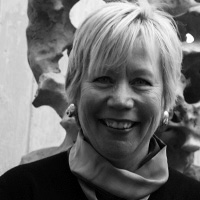
Photo via Prince.org
Well, you had to have known this post was coming after seeing the debate last night, reading about it, or catching the highlights on the news.
Also, I can't believe I'm blogging about Sesame Street for the second time in six weeks.
As a political scientist by schooling, I had to wonder who on the campaign decided it would be funny, smart, or a good idea to throw in something quippy about firing Big Bird or Jim Lehrer when once again referring to a policy of not borrowing money from China to pay for PBS (or the National Endowment for the Arts as was mentioned in a magazine article a few months ago).
First, you automatically make a ton of enemies by putting the image of Big Bird being evicted out of his Sesame Street nest in people's heads.
Second, you are simply catering to hardcore fiscal conservatives who don't seem to understand that public television was only allocated $75 million from the Corporation for Public Broadcasting in the FY 2012 budget (plus about $222 million in direct grants to individual public television stations)—that's it. Guess how much was spent on national defense ($716 billion), health ($361 billion), and energy ($23 billion).
Some would argue that PBS stations should start airing commercials to generate more revenue or that there could be stations that cover more than one city or combine into regional networks. Okay, I can give you that, but that still doesn't take away from the fact that the small amount of federal spending goes such a long way to help PBS leverage those pledge drive (without quality programs partially funded by the government would people still pay?) or corporate dollars.
Others say we should just privatize all PBS stations. You might want to ask folks in New Jersey if they feel their NJTV lives up to the formerly state-run NJN when it comes to covering the affairs of a state trapped between two giant media markets with no other statewide network.
Oh and then there's Kansas. Remember when someone tried to privatize the state arts agency claiming that it could and should run without government support? That didn't turn out so well.
Read More





































